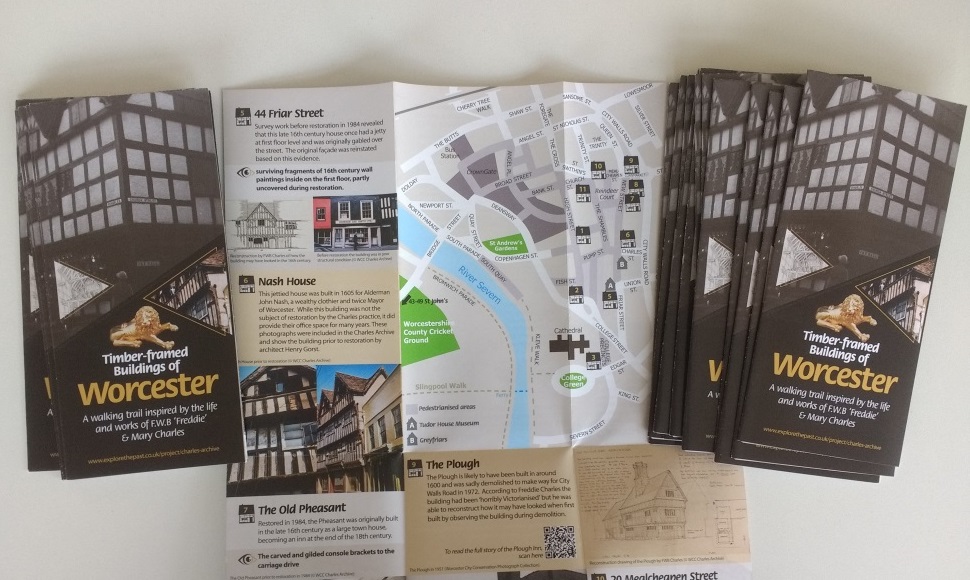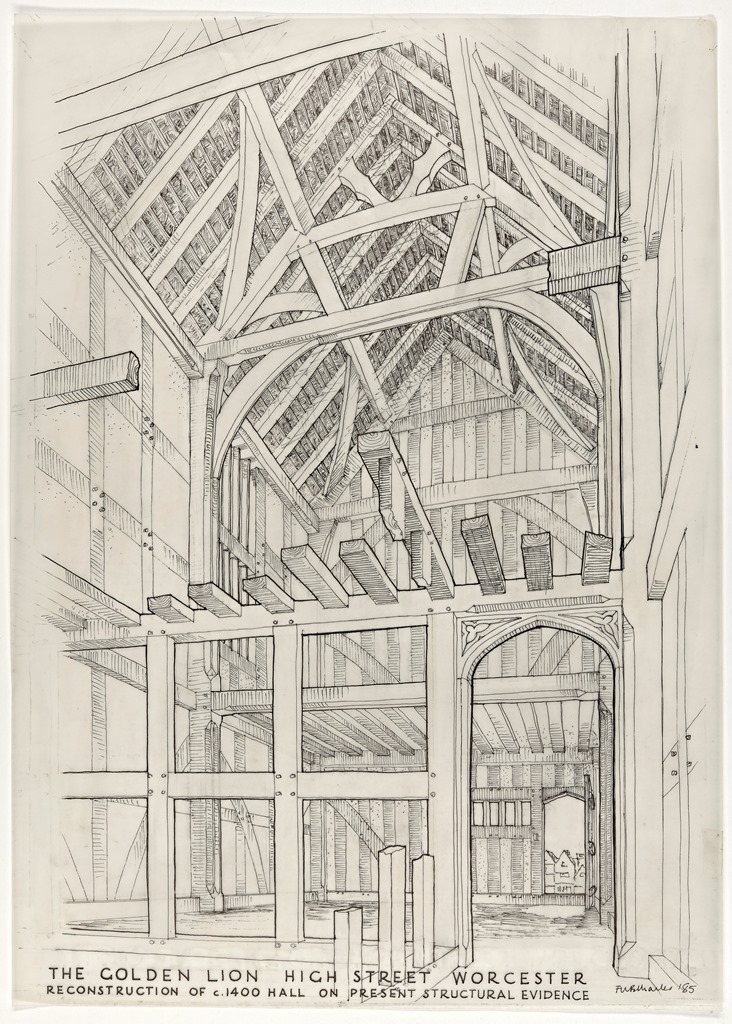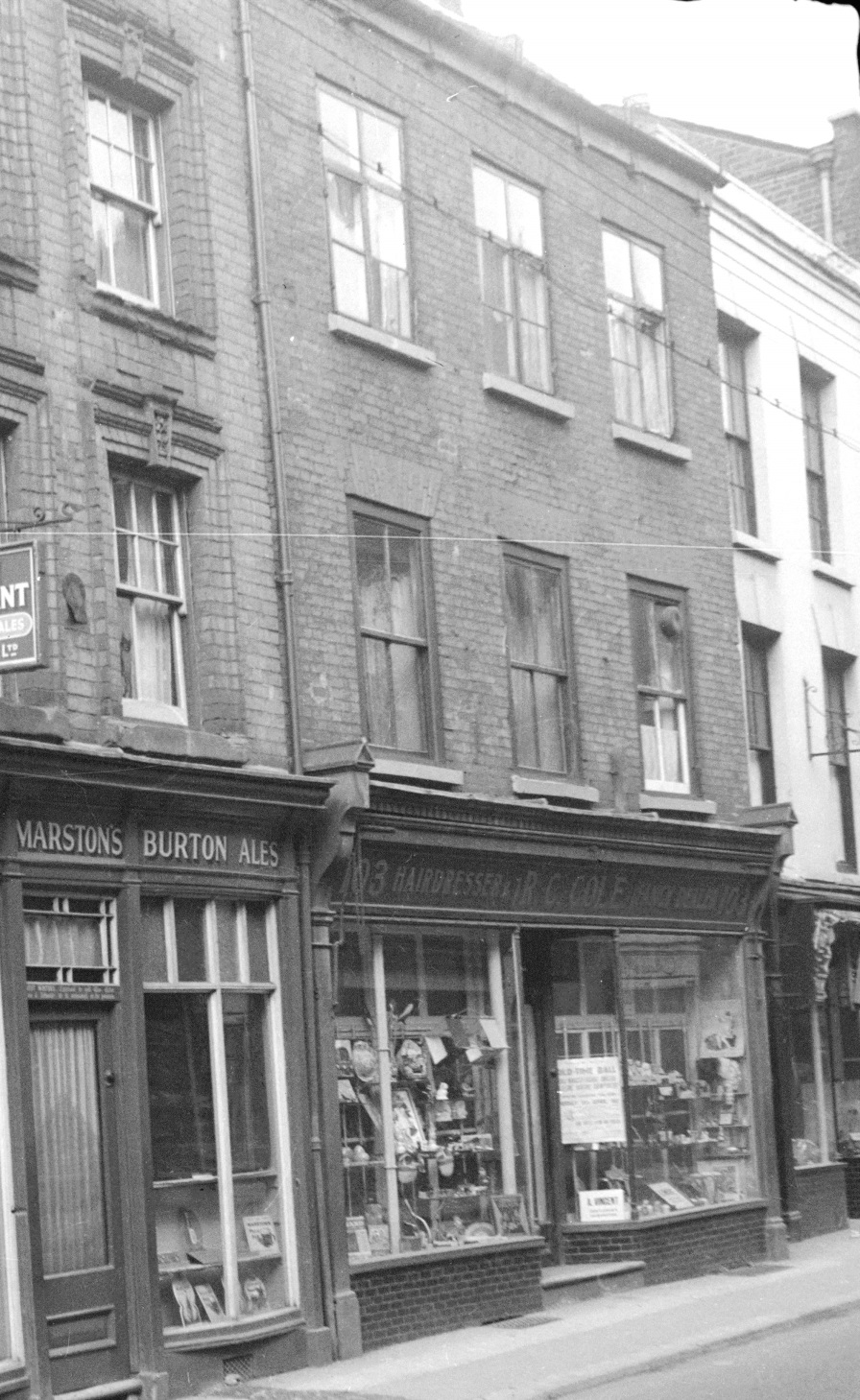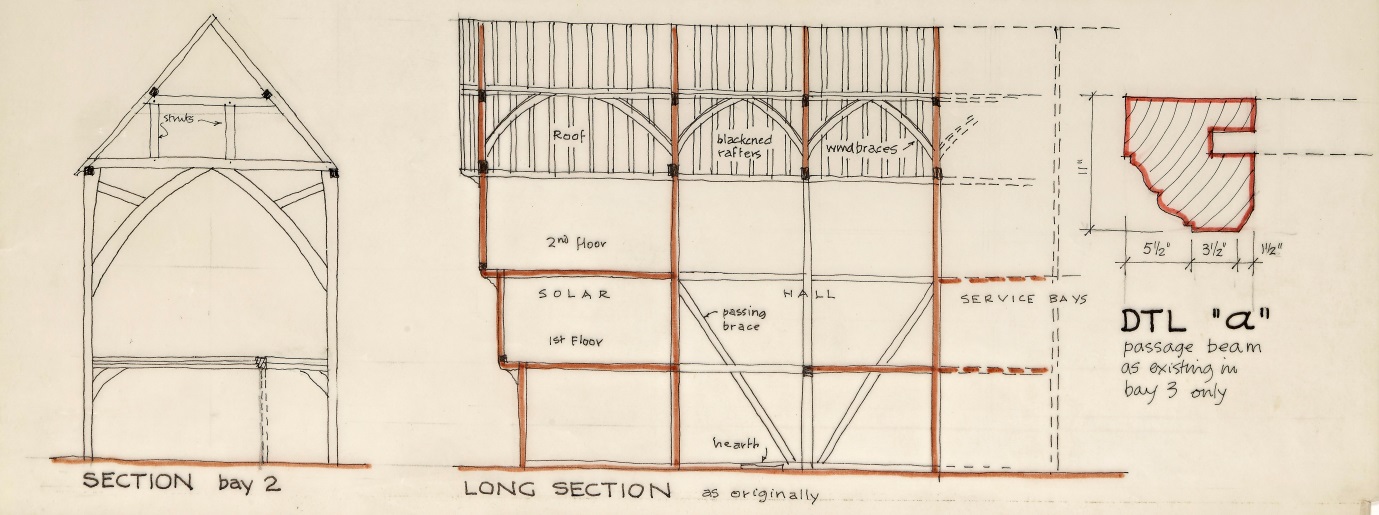The Charles Archive – Worcester’s High Street
- 7th November 2018
This is the seventeenth in a series of blog posts celebrating the life and work of timber-frame building specialists FWB ‘Freddie’ and Mary Charles. Funded by Historic England, the ‘Charles Archive’ project aims to digitise and make more accessible the Charles collection.
If you want to explore the High Street yourself we have downloadable trail leaflets or you can pick them up from the Tourist information Centre.

Worcester’s High Street has seen considerable alteration over the centuries. Of probable Roman origin, the street takes its axial course along the spine of the town’s promontory on the gravel terraces above the River Severn. While this has remained a constant, the buildings contained within the street have evolved, so that though there is some survival of medieval building fabric, this is patchy and from the street frontage not at all evident. Earlier buildings have been refronted with Georgian and Victorian facades, while whole swathes of the street, particularly to the north on the east side, made way for widening works in the early 20th century as part of what was to be known as ‘The Great Tramway Siege’. It was no surprise to the archaeologically-minded when, in the mid-2000s, High Street resurfacing works uncovered medieval cellars in the middle of the street. Further mid-20th-century demolition of the area to the south of Pump Street remains notorious to this day with the loss of Lich Street and the last Cathedral Lychgate in the country. One fine example of a surviving 15th-century merchant’s house was recorded and restored by Freddie Charles in 1985 and is illustrated by his reconstruction drawing here. The building, known as The Golden Lion and now a coffee house is a stunning example of his work and well worth a visit.

Reconstruction drawing by Freddie Charles, 1985 © Worcestershire County Council: Charles Archive Collection (CA_BA13218-1-8_02 [reduced])
Elsewhere, 20th-century intervention has been less comprehensive with the notable exception of sites such as The Earl’s Post on the corner of Copenhagen Street, discovered during demolition in 1964 to be of 15th-century origin, but sadly dismissed by the then Senior Investigator of Historic Buildings after what seems a cursory look at their façade. “These are undistinguished and worn out buildings of the late 18th century or more likely early 19th. We need not concern ourselves about them.” A cautionary tale on the dangers of taking historic buildings at face value! Just a few doors south of this site however, no 103 High Street received the attention of the Charles practice in the mid-1970s.

103 High Street in 1951 ©Worcester City Conservation Photograph Collection
In 1974, 103 High Street was in a very sorry state. Structural reports had concluded that the building was unsound and the owners submitted an application for and were granted Listed Building consent for demolition. Later that year however, the owners decided to sell the property ‘due to financial conditions overall in this country’ and the new owners submitted a new planning application to refurbish the existing shop and maisonette. A letter from Freddie Charles in July 1975 included a ‘very quick write-up’ of the building and stated that the new owner was ‘very sympathetic in preserving the building as it stands’. Freddie’s write-up provides us with a short rundown of the key features of the building as well as plan and section drawings. He describes the building as consisting of three equal bays, the first of which now presenting a three-storey Georgian frontage, but originally gabled to the street and containing the solar with a shop or workshop at ground level and the private chambers above. A passage at ground-floor led to a hall in bays 2 and 3, the design of which established a date of c1400. Freddie was most impressed by the central truss, describing it as ‘one of the most remarkable survivals of medieval Worcester. It is lofty and has giant knee-braces forming a Gothic arch right across the hall’. Other features of the building may even place its date in the mid-14th century, with very long passing braces surviving in the side walls of bay 2.

103 High Street, survey by FWB Charles, 1975 © Worcestershire County Council: Charles Archive Collection (CA_BA13218-1-11_01 [edit])
This is a guest blog by Sheena Payne-Lunn, Historic Environment Record Officer for Worcester City Council, who has been working with us on the project
![]()
Post a Comment